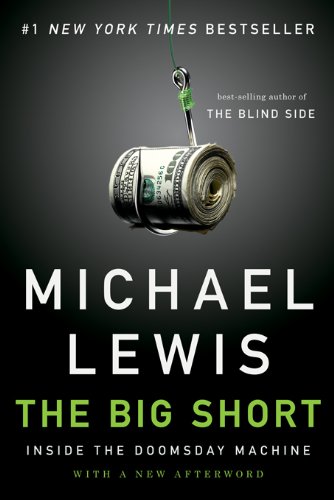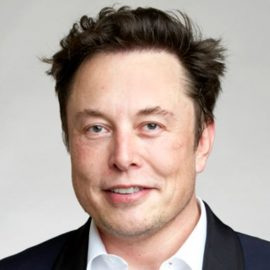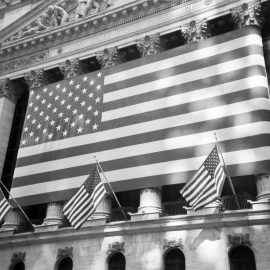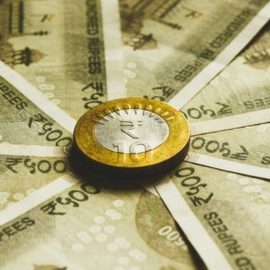

This article is an excerpt from the Shortform summary of "The Big Short" by Michael Lewis. Shortform has the world's best summaries of books you should be reading.
Like this article? Sign up for a free trial here .
Who is The Big Short‘s Dr. Michale Burry? How did he predict the 2008 financial crisis, and what did he get out of it?
Dr. Michael Burry of The Big Short fame is a medical doctor by training and an investor and hedge fund manager who predicted and profited from the 2008 subprime mortgage crisis.
We’ll cover Dr. Michael Burry’s background, the background of the financial crisis, and how Dr. Burry shorted the housing market.
Betting Against Wall Street
In the early 2000s, the big banks had foolishly hitched their wagons to the subprime mortgage-backed securities market, which suffered from fatal structural weaknesses. But for some savvy investors who saw the mortgage bonds for what they really were, the banks’ short-sightedness represented an unparalleled opportunity. They could bet against Wall Street’s position and reap enormous profits. This was the world of short-selling.
Dr. Michael Burry: An Eye for Value
Dr. Michael Burry was, along with Steve Eisman, skeptical (to say the least) about the confidence with which Wall Street sold mortgage-backed securities. Burry was another outsider to finance, who’d come to Wall Street with an unconventional background and unique life story.
He had lost his eye at the age of two, when it was removed during surgery for a rare form of cancer. Dr. Michael Burry wore a glass eye to replace the one he’d lost. Burry later would observe that this caused him to see the world differently, both literally and figuratively. Perhaps out of self-consciousness, he had trouble with interpersonal relations and thought of himself as something of a loner. To compensate for his social struggles (he would learn much later in life that he suffered from Asberger’s syndrome, a disorder on the autism spectrum), he learned to analyze data with a rigorous eye to detail, seeing patterns that no one else could see.
Michael Burry was a medical doctor by training, who discovered a knack for investing and stock-picking when he was in medical school in the 1990s after studying the teachings of the legendary investor Warren Buffett. In his spare time (which, as a medical student, was rare) he started a blog on value investing that quickly became a favorite among traders and investment bankers—all of whom were amazed by his aptitude as a newcomer to investing and by the fact that he was doing this while attending medical school. As a value investor, Dr. Michael Burry specialized in identifying companies that could be acquired for less than their liquidation value—that is, finding companies that the market was undervaluing. This form of investing was a natural fit for the analytical and unconventional Burry, who saw things that others could not.
The success of his blog established Dr. Michael Burry as an acknowledged authority on value investing. Eventually, he quit medical school to pursue a career in finance. Joel Greenblatt of Gotham Capital offered Burry a million dollars to start his own fund, Scion Capital.
Scion was quickly delivering for its clients, no doubt due to Burry’s keen insights about true value and risk. He knew how to beat the market. In 2001, the S&P index fell by nearly 12 percent, but Scion was up 55 percent. In 2002, the S&P fell by over 22 percent, but Scion was up 16 percent. Burry believed that incentives were the driving force behind much of human behavior—and that his rival fund managers had poor ones. Most other managers simply took a 2 percent cut of the total assets under their portfolio, which they earned regardless of how their actually performed. Thus, their incentive was simply to hoard clients’ money, not to take the time and energy to grow that money.
Dr. Michael Burry believed this to be inherently unfair. Scion took a different tack, only charging customers for the actual expenses incurred running the fund. Burry insisted on profiting only when his clients profited first.
Dr. Michael Burry’s Secret Sauce
But what made Dr. Michael Burry so successful? How was he able to consistently beat the market by such wide margins? It turns out, he wasn’t really doing anything special. There was no insider trading. He didn’t have secret information or special technology that anyone else on Wall Street didn’t have access to.
He was doing nothing more than buying stocks and analyzing companies’ financial statements. But simply analyzing statements set him apart. No one else was bothering to do the hard, tedious work of actually studying up on the companies they were investing in.
A $100-per-year subscription to 10-K Wizard gave Dr. Michael Burry access to all the corporate financial statements he could ever need. If that didn’t get him what he needed, he would sift through obscure (yet publicly available) court rulings and government regulatory documents to glean valuable nuggets of information that could change the value of companies and markets. He was finding information in places no one else was bothering to look.
Dr. Michael Burry Shorts the Housing Market
The Big Short‘s Dr. Michael Burry saw a rare opportunity in the subprime housing bond market, once again where no one else was looking. But this was a twist on his usual approach. Instead of looking for assets that were undervalued, he was going to target the subprime market because of his conviction that it was extraordinarily overvalued. He was going to short the housing market—a big short.
Michael Burry had, with characteristic fastidiousness, studied the underlying loans which made up the pool of mortgages being stuffed into the bonds. He saw that borrowers with no income and no documentation were taking up a larger and larger share of the mortgages. Lending standards had collapsed in the face of the market’s insatiable demand for subprime, as loan originators devised more and more elaborate means to justify loaning money to clearly un-creditworthy borrowers. As we’ve seen, these loans were then being repackaged into bonds and sold off by the big banks.
But how would Dr. Michael Burry short these types of bonds? Their structure made them impossible to borrow, as the tranches were too small to individually identify. The market didn’t have a mechanism for an investor like Burry, who believed that the subprime mortgage bond market was essentially worthless. But Burry knew a workaround to this problem. He was about to dive into the world of credit default swaps.
Burry saw that now was the time to act. Once the teaser rates on the subprime loans went away and borrowers started getting hit with higher interest rates (in roughly two years), there would be a wave of defaults that would bring the mortgage bond market to its knees. Once that started happening, lots of investors would be desperate to purchase insurance on the bonds they’d invested in—and the only way they would be able to do this would be through the credit default swaps that Dr. Michael Burry would own.
Michael Burry Creates Credit Default Swaps for Mortgage Bonds
But there was a hitch in his plan: there were no credit default swaps for subprime mortgage bonds. The banks would have to create them. Furthermore, most of the big firms that would be willing to create them might run into solvency issues and be unable to actually pay Burry the returns on his swaps if his catastrophic predictions were accurate. They were too exposed to subprime. He ruled out Bear Stearns and Lehman Brothers as potential credit default swap sellers for his big short, reasoning that they were too deep in the subprime game to be able to pay him when the bonds failed.
In 2005, only Deutsche Bank and Goldman Sachs expressed any interest. Dr. Michael Burry hammered out a deal with them to establish a pay-as-you-go contract, ensuring payment as individual bonds failed. In May 2005, he purchased $60 million in swaps from Deutsche Bank, $10 million apiece on six separate bonds. Burry hand-picked these bonds after having read the prospectuses, seeing that they were composed of the dodgiest, most questionable subprime loans.
Eventually, Dr. Michael Burry set up a separate fund, called Milton’s Opus, dedicated solely to purchasing credit default swaps on mortgage-backed securities. In October 2005, he told his investors that they now owned roughly $1 billion of such assets. Some investors were outraged that Burry had tied up their money in (what seemed to them) such a risky bet. The U.S. housing market had never collapsed in the way that Burry had predicted. But Burry also knew that a full-on collapse wasn’t necessary for him to reap enormous profits. The way the swaps were structured, he would make a fortune if even a fraction of the mortgage pools went belly-up. The banks barely seemed to understand what they had sold him.
But within months, the market was starting to see the wisdom of Dr. Michael Burry’s big short move. Before the end of 2005, representatives from the trading desks at Goldman Sachs, Deutsche Bank, and Morgan Stanley were asking Burry to sell back the credit default swaps he’d purchased—at very generous prices. Their sudden interest in this financial instrument, which he’d helped them create mere months before, could only mean one thing—the underlying mortgages were starting to fail.
Not Fast Enough
Initially, the banks and ratings agencies wouldn’t acknowledge that anything was wrong. Dr. Michael Burry was confident that his bet against the housing market would be vindicated. But it was an expensive position to maintain, and one that was costing his wealthy clients significant money in the here and now, as he continued to owe the banks the premiums on the credit default swaps he’d purchased. For the first time, Burry was underperforming the market. In 2006, the S&P had risen by more than 10 percent—Scion had lost 18.4 percent.
Burry was baffled by how the market was behaving. The data from the mortgage servicers kept getting worse and worse as 2006 turned to 2007 (and the teaser rates expired). The loans were faltering at higher and higher rates, yet the price of insuring the bonds composed of these loans kept falling. It was as if a fire insurance policy on a house had become cheaper after the house was on fire. Logic, for once, had failed Dr. Michael Burry. And he was facing an investor revolt, as his clients began to clamor for their money back out of his fund, thinking that he was either a criminal, a madman, or an idiot.
This was a major problem for Dr. Burry. There was language in Burry’s credit default swap contracts with the banks that allowed the major Wall Street firms to cancel their obligations to Burry if his assets fell below a certain level. Thus, even if Scion’s predictions proved to be correct, the big banks could bluff their way through the crisis, maintain high prices for subprime mortgage bonds, run out the clock on Burry, and force him to void his position before he collected a dime. It was imperative to him (and to his investors, though few were convinced) that there not be a mass withdrawal of funds from Scion. They would lose everything, right when they were on the cusp of winning everything.
Dr. Michael Burry Side-Pockets
So what did Burry do? He told his investors, no, they couldn’t have their money back. In doing this, he “side-pocketed” his investors’ money, keeping it invested until his bet had fully played out.
But as the aforementioned downturns in the subprime market began in 2007, Scion’s fortunes with the big short began to shift, just as Dr. Michael Burry had told investors they would. In the first quarter of 2007, Scion was back up by 18 percent. The loans were going bad and borrowers were getting slammed with higher interest payments. The bill was finally coming due for Wall Street.
In just one pool of mortgages that Scion bet against, delinquencies, foreclosures, and bankruptcies rose from 15.6 percent to 37.7 percent from February to June 2007. More than a third of borrowers had defaulted on their loans. The bonds were suddenly worthless. The house was on fire. Investors were scrambling to either sell off these bonds (for a fraction of their original value) or purchase insurance on the bad bets they’d made—insurance that Mike Burry now owned in spades.
When Morgan Stanley finally admitted defeat and exited the trade, they had lost a net $9 billion, the single largest trading loss in Wall Street history. By the end of 2007, the bank lost over $37 billion through the subprime mortgage bond and related derivatives market. Total losses on U.S. subprime-related assets would eventually top $1 trillion.
Dr. Michael Burry cashed in his chips for his big short on August 31. His profits were over $720 million. To his chagrin, the investors who had had so little faith in his strategy never thanked him or apologized to him for questioning his ethics and even his sanity. He had always rejected the standard money manager policy of charging a 2 percent fee off the top of his total portfolio of assets managed, believing that this was nothing more than a way to scam investors without doing any actual work. This integrity had cost him dearly while he was paying hefty premiums on his credit default swaps. He’d even had to fire employees to maintain his big short position. After he made his clients even richer with his wildly prescient and successful bet, he decided to reverse course and start charging the fee.
———End of Preview———

Like what you just read? Read the rest of the world's best summary of "The Big Short" at Shortform . Learn the book's critical concepts in 20 minutes or less .
Here's what you'll find in our full The Big Short summary :
- How the world's biggest banks contributed to the 2008 financial crisis, greedily and stupidly
- How a group of contrarian traders foresaw the bubble popping, and made millions from their bets
- What we learned from the 2008 crisis - if anything






